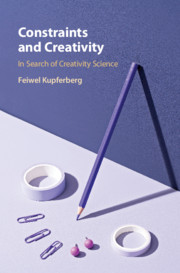Introduction
Published online by Cambridge University Press: 09 July 2021
Summary
Creativity seems to belong to the broad type of phenomena which, like emotions, have causes or conditions but which can take different roads or have different outcomes. This is the basic reason why constraint theory might be a good place to start. Creativity is neither total order, nor total chaos (Simonton, 2007), but something in between, order in or through chaos. But to clarify how constraint theory can help us identify the First principles of creativity science, we need to collect the relevant data. According to Aristotle, a general First principle for all scientific work is for the researcher to get “intimate” with the relevant data (Anagnostopoulos, 2009). With “data” or whatever word Aristotle used, he meant not only raw data observed or collected by the researcher, but also data which had already been collected and interpreted by other researchers (the distinction we today call primary and secondary data was not that important for him). Having compared many intellectual biographies of pioneers (P-creativity as H-creativity) in science, art and technology (S-creativity, A-creativity, T-creativity) with a special focus on the discovery of First principles anddisciplines in the making, I became convinced of the soundness of Aristotle’s approach. The core problem when it comes to data, is not whether they are primary or secondary but if the intimate knowledge gained by such data clarifies the nature of the knowledge object or not (compare Montuschi, 2003).
- Type
- Chapter
- Information
- Constraints and CreativityIn Search of Creativity Science, pp. 1 - 18Publisher: Cambridge University PressPrint publication year: 2021

